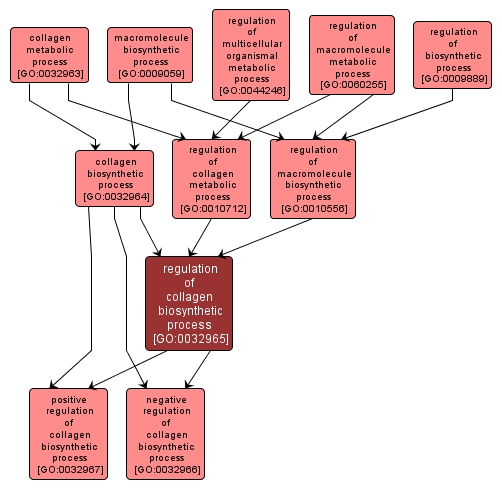GO TERM SUMMARY
|
| Name: |
regulation of collagen biosynthetic process |
| Acc: |
GO:0032965 |
| Aspect: |
Biological Process |
| Desc: |
Any process that modulates the frequency, rate or extent of the chemical reactions and pathways resulting in the formation of collagen, any of a group of fibrous proteins of very high tensile strength that form the main component of connective tissue in animals. |
Synonyms:
- regulation of collagen formation
- regulation of collagen biosynthesis
- regulation of collagen synthesis
- regulation of collagen anabolism
|
|

|
INTERACTIVE GO GRAPH
|














